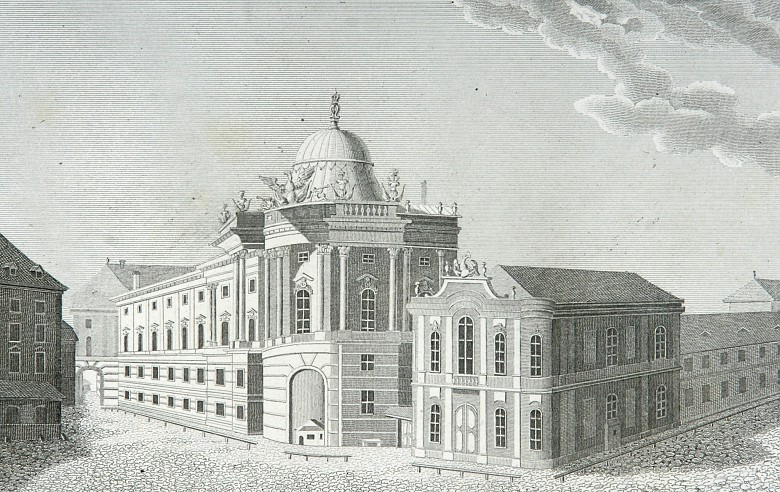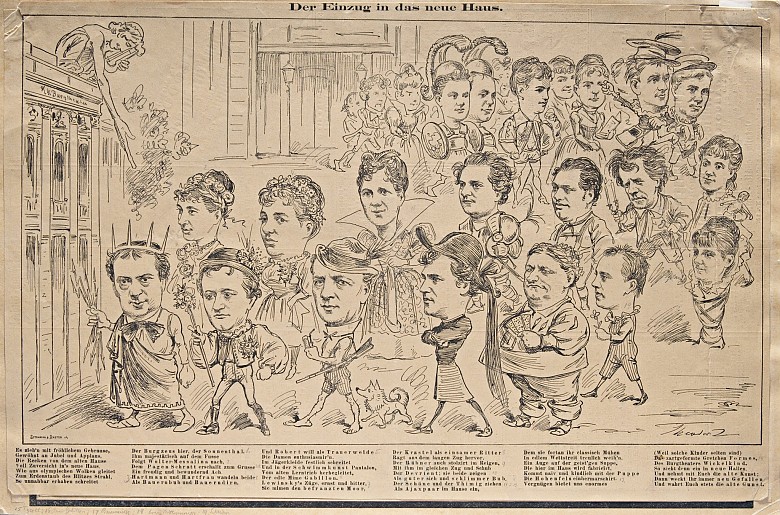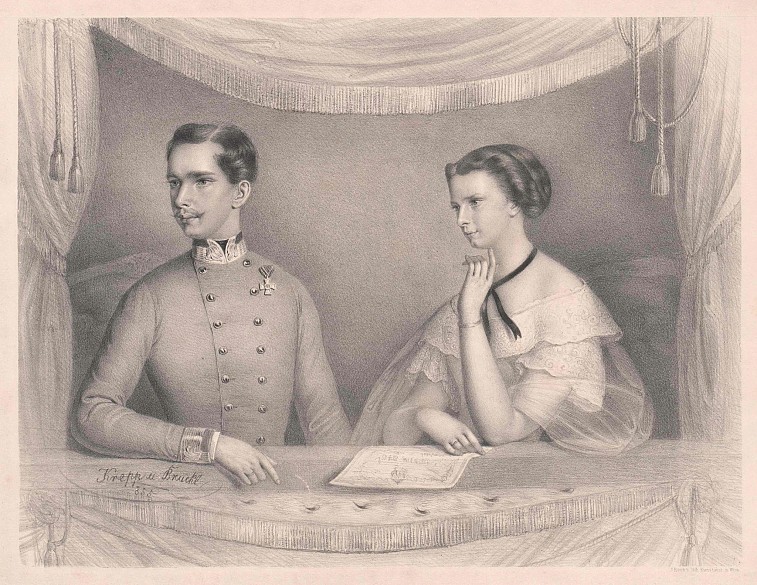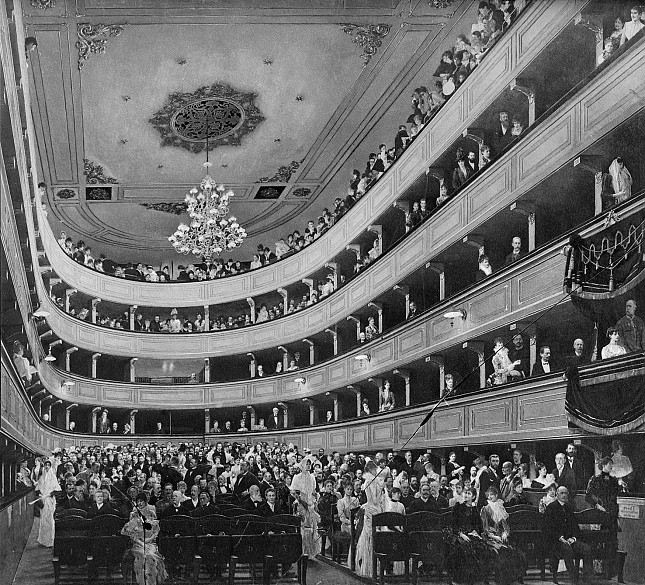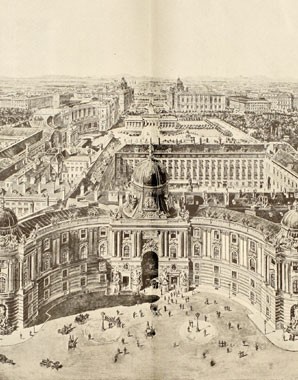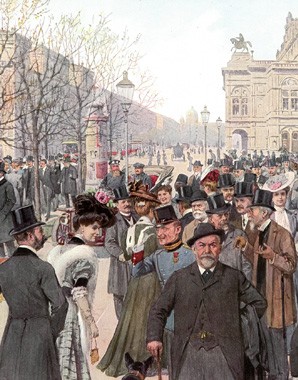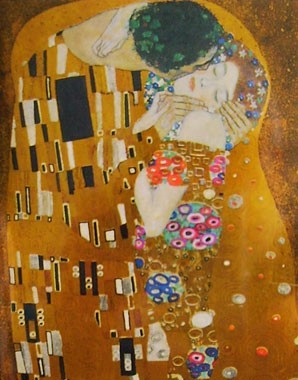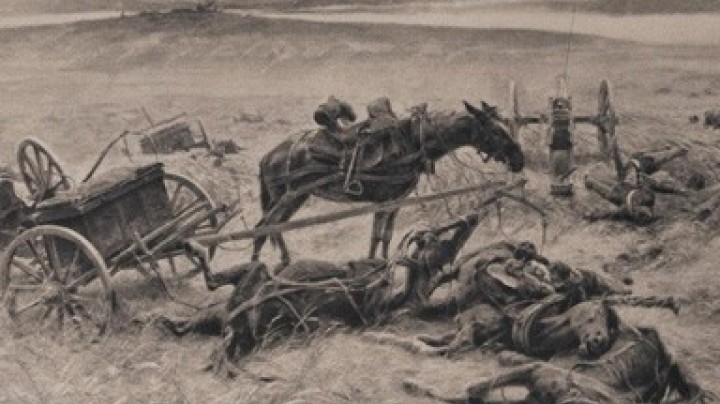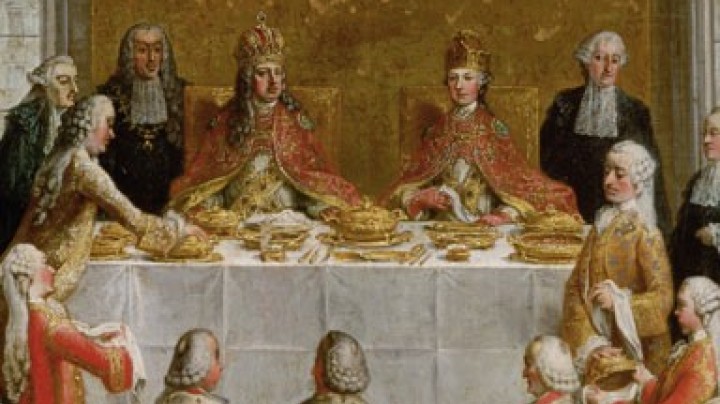'Our revels now are ended': the old Burgtheater moves to its new premises on the Ring
The Viennese mourned when their beloved theatre on Michaelerplatz shut its doors for the last time in 1888. Gustav Klimt even recorded its interior in a painting.
The critic Ludwig Speidel gave an account of the actors moving from the old Burgtheater on Michaelerplatz to the new theatre on the RingNot without severe misgivings but fortunately also with joyful hopes for the future we accompany the Burgtheater’s company of actors as they leave the Michaelerplatz for the new theatre on the Ringstrasse.
The Neue Wiener Tagblatt carried an account of the farewell performance in its issue of 13 October 1888.Thus the curtain has fallen for the last time in the old house, the parting has taken place, and how hard this was for the friends of the plain old weathered building that is nonetheless so dear to us, cannot be expressed in mere prose. … and by half-past six a large part of the auditorium was filled. Nobody wanted to be late; and so almost everybody came early. The state of excitement the audience was in was evident from the highly animated conversation. … Not even the very highest circle of the auditorium was spared this excitement. In the Court Loge there was such a coming and going as we have never observed before. … The Emperor and his daughter seemed to be very amused by the lively hubbub in the theatre, for they scanned the assembly with cheerful smiles, observing the fourth gallery in particular for a considerable time. In the third act Emperor Franz Joseph withdrew … and in the fifth act the Emperor returned, this time staying until the end. … The auditorium was occupied by ‘tout Vienne’. Everybody in Vienna with a claim to social rank had made an appearance.
The little theatre on Michaelerplatz stood in the way of a large-scale building project: the St Michael Wing of the Hofburg, for which Joseph Emanuel Fischer von Erlach had drawn up plans back in 1725 as part of the designs for the Winter Riding School, was now finally to be built. The old Burgtheater had to go and was duly demolished.
The last performance in October 1888 – of Goethe’s Iphigenie auf Tauris – was a melancholy occasion: the Viennese audiences loved the old wooden theatre despite its barn-like appearance. It seems that they were not bothered by its draughtiness or by its cramped dimensions which meant that the last of the 1,200 visitors who had squeezed into its auditorium were not able to leave until a good hour after the performance had ended.
The imperial family also had a special affection for this theatre. In keeping with courtly tradition, it had been built abutting the Hofburg on Michaelerplatz, and the members of the imperial family were thus able to enter the imperial box directly from their apartments. Empress Elisabeth was a frequent visitor to the theatre.
Before the old Burgtheater was demolished, the city of Vienna commissioned Gustav Klimt and Franz Matsch to paint the auditorium. Klimt fulfilled this task conscientiously, adding 200 faithful miniature portraits, a veritable who's who of Vienna’s high society. Here one can see representatives of the highest court offices and members of the imperial government rubbing shoulders with society bigwigs, artists and nouveaux riches. Everybody wanted to be in the picture. When it was discovered that Karl Lueger, later mayor of the city, was missing, Klimt had to insert him afterwards.
